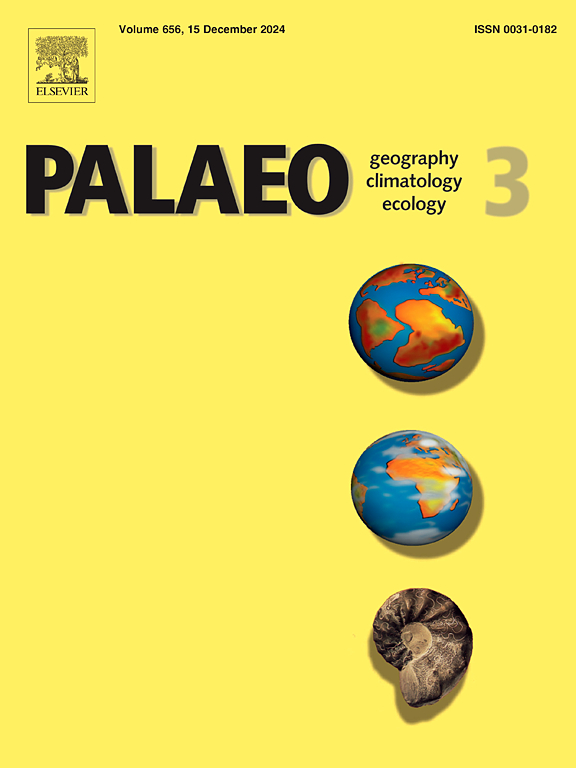Terminal pleistocene organic carbon anomaly in Lake Biwa sediments linked to potential anthropogenic fires: Implications for early human impact on large lake systems
IF 2.7
2区 地球科学
Q2 GEOGRAPHY, PHYSICAL
Palaeogeography, Palaeoclimatology, Palaeoecology
Pub Date : 2025-07-21
DOI:10.1016/j.palaeo.2025.113159
引用次数: 0
Abstract
Lacustrine sedimentary records serve as valuable archives for reconstructing past fire histories and associated limnological changes. Lake Biwa, the largest freshwater lake in Japan, displays a distinct anomaly in total organic carbon (TOC) concentrations around 13 ka, the origin of which remains uncertain. Previous studies have proposed a potential link between this anomaly and elevated charcoal concentrations, suggesting intensified fire activity. However, the precise temporal relationship between these phenomena remains unclear. In this study, we conducted continuous, high-resolution analyses of TOC contents and charcoal concentrations from sediment cores to investigate their association. Our results reveal a clear synchrony between the TOC anomaly and heightened charcoal concentrations around 13 ka. Quantitative analysis indicates that the direct contribution of charcoal to TOC is negligible. We propose that frequent fire activity during this period likely destabilized soils, enhancing the influx of terrestrial organic matter into the lake and driving the observed TOC anomaly. Notably, the timing of increased fire activity coincides with the earliest evidence of human settlement in the region. Given the absence of similarly elevated charcoal concentrations at other times, our findings suggest that these fires were likely anthropogenic. This study provides one of the earliest potential examples of human-induced impacts on large freshwater lake ecosystems.
琵琶湖沉积物中与潜在人为火灾有关的晚期更新世有机碳异常:早期人类对大型湖泊系统影响的启示
湖泊沉积记录为重建过去的火史和相关的湖泊变化提供了宝贵的档案。琵琶湖是日本最大的淡水湖,其总有机碳(TOC)浓度在13ka前后出现了明显的异常,其来源仍不确定。先前的研究提出了这种异常与木炭浓度升高之间的潜在联系,表明火灾活动加剧。然而,这些现象之间确切的时间关系仍不清楚。在这项研究中,我们对沉积物岩心的TOC含量和木炭浓度进行了连续的高分辨率分析,以研究它们之间的关系。结果表明,TOC异常与13ka前后碳浓度升高具有明显的同步性。定量分析表明,木炭对TOC的直接贡献可以忽略不计。我们认为,这一时期频繁的火灾活动可能破坏了土壤的稳定,增加了陆相有机质流入湖泊,并驱动了观测到的TOC异常。值得注意的是,火灾活动增加的时间与该地区人类定居的最早证据相吻合。考虑到在其他时间没有类似的木炭浓度升高,我们的研究结果表明,这些火灾可能是人为的。这项研究为人类对大型淡水湖生态系统的影响提供了最早的潜在例子之一。
本文章由计算机程序翻译,如有差异,请以英文原文为准。
求助全文
约1分钟内获得全文
求助全文
来源期刊
CiteScore
5.90
自引率
10.00%
发文量
398
审稿时长
3.8 months
期刊介绍:
Palaeogeography, Palaeoclimatology, Palaeoecology is an international medium for the publication of high quality and multidisciplinary, original studies and comprehensive reviews in the field of palaeo-environmental geology. The journal aims at bringing together data with global implications from research in the many different disciplines involved in palaeo-environmental investigations.
By cutting across the boundaries of established sciences, it provides an interdisciplinary forum where issues of general interest can be discussed.

 求助内容:
求助内容: 应助结果提醒方式:
应助结果提醒方式:


